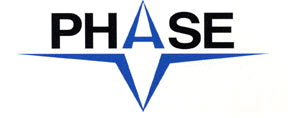Clinical Therapeutics/New Technology – Glucose Monitoring and Sensing Presented on Sunday, June 15, 2014 12:00 PM
Author(s): MARCIAA. TESTA, JASVINDER K. GILL, MAXWELL SU, LOUISE TRAYLOR, DONALD C. SIMONSON, Boston, MA, Bridgewater, NJ, Wellesley,MA The relationship between hypoglycemia (HYPO), glycemic excursions and symptoms during intensive insulin titration is difficult to evaluate because contemporaneous measurements are required. We used data from a 24-week cross-over RCT conducted at 50 U.S. clinics comparing insulin glargine plus premeal insulin glulisine (GG) vs bid premix insulin 75/25 or 70/30 (PM) requiring titration to HbA1c < 7.0% to model these associations. Patients (81 T1DM, 306 T2DM, 53% female, 78% Caucasian) completed CGM, SMBG and daily diaries using mobile devices to record date, time and glucose of a HYPO event along with a 15-item symptom checklist, daily 4-point SMBG and insulin logs, and a twice weekly 43-item symptom questionnaire. CGM 3-day sessions were performed at baseline, weeks 12 and 24, while 4-point SMBG was done daily over 24 weeks. CGM and SMBG analytics included within-day glucose standard deviations (CGM-SD and SMBG-SD), Glycemic Risk Assessment Diabetes Equation (CGM-GRADE) and Low Blood Glucose Index (CGM-LBGI) as predictors of HYPO (< 70 mg/dl). Negative binomial regression controlling for mean glucose and treatment indicated that SMBG-SD (p < 0.0001), CGM-SD (p < 0.0002), GRADE (p = 0.03) and LBGI (p = 0.02) were independent predictors of HYPO. For the SMBG-SD models, GG had lower rates of hypoglycemia compared to PM during the 24 weeks using within-day (IRR = 0.87, p = 0.02) or between-day SD (IRR = 0.81, p < 0.001). Linear mixed models controlling for treatment and baseline indicated that during the final week of treatment, patient-reported outcomes were more favorable [Overall QOL (p = 0.04), HYPO (p = 0.02), Hyperglycemia (p < 0.05), Negative Feelings (p = 0.01), Positive Feelings (p = 0.01), and Cognitive Functioning (p = 0.05)] for lower levels of SMBG. SMBG-SD did not explain additional variation. CGM and SMBG analytics provide useful predictors of HYPO risk and associated symptomatology, and should be part of diabetes management to reduce these barriers to effective insulin titration
Disclosure: M.A. Testa: None. J.K. Gill:Employee; Author; Sanofi. Research Support; Author; Sanofi. M. Su: None. L. Traylor:Employee; Author; Sanofi.Research Support; Author; Sanofi. D.C. Simonson: None. To view this Abstract and e-Poster, click on the hyperlink and then the View e-Poster Icon View e-Poster -Click Here To open View e-Poster it is best to use Chrome or Mozilla. If your browser opens automatically in Windows Explorer copy and direct link below in Chrome or Mozilla browser: https://ada.scientificposters.com/index.cfm?k=niw5enbnxb


